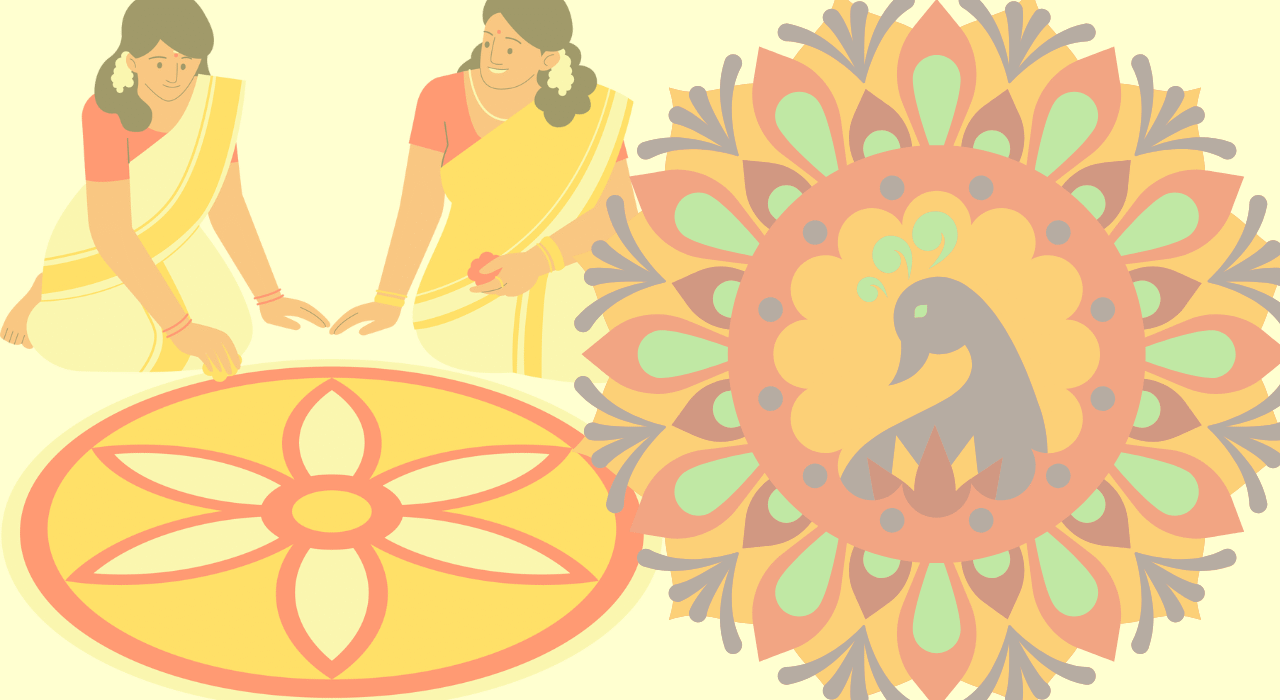The Enchanting World of Alpana: Bangladesh’s Living Canvas of Tradition and Art
“Art is not what you see, but what you make others see.” – Edgar Degas
Few things capture the soul of Bangladesh’s folk culture as vividly as Alpana—the intricate, ritualistic floor art that transforms ordinary spaces into ephemeral masterpieces. Passed down through generations, this tradition is more than just decorative; it’s a language of symbols, a prayer made visible, and a celebration of life’s cyclical beauty. If you’ve ever walked into a Bengali home during festivals like Pohela Boishakh or weddings and wondered about the delicate white patterns adorning the floors, you’ve witnessed Alpana.
But here’s the twist: Alpana isn’t just art; it’s a cultural heirloom begging to be revived, reinterpreted, and shared. In this 1,000-word deep dive, we’ll explore how to engage with Alpana—whether you’re a curious traveler, a diaspora reconnecting with roots, or an artist seeking inspiration.
1. The Origins: What Makes Alpana Unique?
Alpana (also called Alpona) derives from the Sanskrit word Alimpana, meaning “to plaster” or “to coat.” Traditionally, women create these designs using a paste of rice flour and water, their fingers dancing across courtyards or prayer spaces. The motifs—swirling vines, lotus blooms, fish, birds, and geometric mandalas—aren’t arbitrary. They’re coded with meaning:
- Fish and Lotuses: Symbols of fertility and prosperity.
- Swastikas (the ancient sun symbol): Invocations of good fortune.
- Dots and Lines: Represent the cosmos and interconnectedness.
Unlike India’s Rangoli or Nepal’s Mandala, Alpana is almost exclusively white, relying on negative space and texture. Its impermanence (washed away by rain or footsteps) mirrors the transient nature of life—a philosophy deeply rooted in Bengali culture.
Pro Tip: To experience authentic Alpana, visit rural Bangladesh during Nabanna (harvest festivals) or weddings. The artistry is raw, unfiltered, and communal.
2. How to Learn Alpana: A Beginner’s Guide
You don’t need to be an artist to try Alpana. Here’s how to start:
Materials:
- Rice Paste: Soak rice overnight, blend into a smooth paste, and strain. Add a pinch of turmeric for a pale yellow hue (optional).
- Surface: Clean, dry mud or cement floors work best. Urban dwellers can use cardboard or canvas.
- Tools: Use your fingers, cotton swabs, or thin cloth wrapped around a stick for precision.
Basic Motifs to Practice:
- Chandmala (Crescent Moon): A series of connected half-circles, symbolizing auspicious beginnings.
- Shankha (Conch Shell): A spiral representing the divine.
- Tree of Life: Stylized branches with repetitive leaf patterns.
Watch Out For: Rushing the design. Alpana demands patience—each line is meditative.
3. Alpana in Modern Spaces: Beyond Tradition
Why should Alpana be confined to floors? Contemporary artists are reimagining it in stunning ways:
- Wall Art: Use acrylic paints or chalk markers to recreate Alpana motifs on walls.
- Textiles: Block-print sarees or cushion covers with minimalist Alpana patterns.
- Event Decor: Replace confetti with temporary Alpana designs at weddings (eco-friendly and culturally rich!).
Case Study: Dhaka’s Charukala Institute now offers Alpana workshops, blending folk art with graphic design. Students use the motifs in logos, murals, and even tattoos.
4. The Cultural Dilemma: Preserving Alpana’s Soul
As Alpana gains global attention (Pinterest is full of “inspo”), there’s a risk of dilution. How do we honor its roots?
- Credit the Source: If you share Alpana online, tag Bangladeshi artisans or explain its cultural context.
- Support Rural Artisans: NGOs like Kumudini Handicrafts train women to monetize Alpana skills. Buy their crafts!
- Avoid Commercial Kitsch: Mass-produced Alpana-themed merch often strips away its sacredness.
A Personal Note: I once watched an elderly woman in Sylhet create an Alpana for her grandson’s wedding. Her hands trembled, but her lines were flawless. “This is my dua (prayer) for him,” she said. That’s the essence no AI or trendy hashtag can replicate.
5. Your Turn: How to Keep Alpana Alive
- Host a Workshop: Gather friends, mix rice paste, and learn together.
- Document Designs: Photograph rural Alpanas—many patterns are vanishing.
- Fuse It Forward: A Japanese friend combined Alpana with Kintsugi (golden repair). Stunning!
Final Thought: Why Alpana Matters
In a world obsessed with permanence—NFTs, granite countertops, 24/7 content—Alpana teaches us to cherish the fleeting. It’s art as a verb, not a noun. So the next time you see a white swirl on a Bengali doorstep, pause. That’s not just a drawing; it’s a love letter to the universe, written in rice and time.
Now, go get your hands dirty.



1 Comment-
Et sed vel montes convallis ornare nascetur mi metus curae Eu commodo curabitur natoque scelerisque conubia vehicula laoreet condimentum congue ut leo euismod pretium mauris